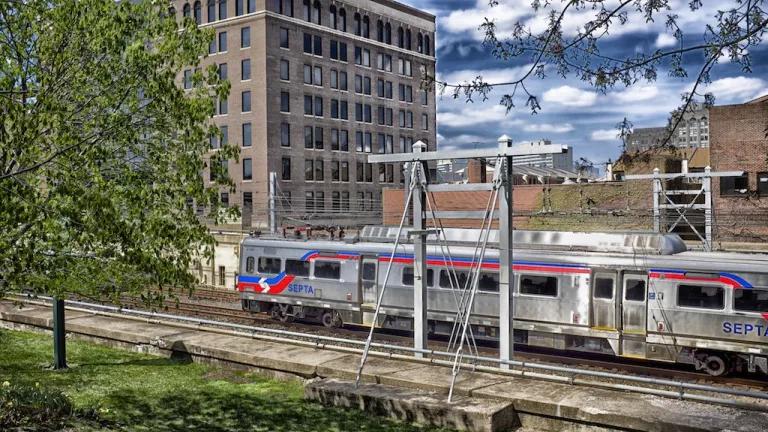L.A. Is Flipping the Script on Commuting

If done right, shared modes of transportation can help underserved Angelenos and the environment.
Los Angeles is primed to reinvent transportation—and this time there’s an opportunity to make things better for the local community and environment.
In its first evolution from remote pueblo to bustling metropolis early in the 20th century, Los Angeles pioneered the era’s modern transportation, creating a spiderweb of electric rail lines stretching from Santa Monica to San Bernardino.
As the automobile reached the masses in the 1920s, Los Angeles once again led the way. But while the embrace of cars and freeways helped drive the region’s growth, this expansion has come at a significant cost to quality of life.
After decades of smog, congestion, and a growing disadvantage for nondrivers, Angelenos have recognized the limits of prioritizing the car at any cost. Support for more efficient, sustainable transportation choices is on the rise. Four times since 1980, L.A. County residents have approved higher taxes to build out a public transit network that now extends more than 100 miles and handles the third-highest number of daily transit trips in the country.
The transformation continues, with new rail projects such as the Wilshire Subway extension, Crenshaw Line, and Regional Connector forming the backbone of a more sustainable transportation network. At the same time, technology-enabled mobility options are reshaping how people navigate L.A.’s 7,500 miles of streets—from car-based services such as Uber and Zipcar to shared bikes and scooters.
However, it is unclear whether these innovative travel modes will benefit the environment and improve access to transportation—or if they might in fact exacerbate traffic, sprawl, and pollution. The emergence of autonomous vehicles could quickly accelerate either scenario as well. What is certain is that we need to be thoughtful about how government and civil society should engage with these new shared mobility options to achieve a cleaner, more accessible transportation system.
That’s why NRDC teamed up with the Los Angeles Department of Transportation (LADOT) to think through the implications of these services. The newly published “Los Angeles Shared-Mobility Climate and Equity Action Plan” provides a policy framework to ensure that shared mobility can help L.A. reach its climate and equity goals.
Because of L.A.’s strong commitment to overcoming the significant challenges of shared mobility, the region presents a unique opportunity to build a sustainable and equitable transportation system that will provide inspiration for other cities.
With input from leaders in transportation, technology, and equity, NRDC and LADOT developed a set of recommendations to help L.A. use shared mobility as a tool to address climate change and make transportation more accessible for all:
- Design shared mobility policies and programs with—and for—underserved, low-income communities.
- Design streets to prioritize walking, biking, public transit, and shared mobility.
- Electrify shared-mobility fleets and expand the charging infrastructure.
- Create seamless and widely accessible transit rider information systems, including payments and real-time transit data.
- Acquire and share data between public and private operators to better manage the public realm.
- Design system-wide shared mobility policies and programs to maximize the benefits to the environment and social performance from all shared mobility modes.
By keeping these goals in mind, we’re confident the city can not only reinvent how Angelenos get around but also achieve cleaner air and greater access to the wonderful opportunity the region provides.
What do you think L.A. needs to do to make the most of shared mobility? Give the report a read and share your thoughts!




